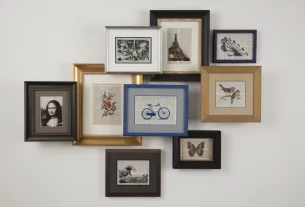Many people assume that anything labeled “faux” is a fake, but with the right tools and practice, faux painting (also known as faux finishing) can create a one-of-a-kind look for your home.
Faux finishing can add depth to walls, mimic the appearance of marble or other materials, and camouflage wall blemishes. Some common techniques include sponging, ragging, and stippling.
Graining
Faux painting is a decorative paint technique that can make your walls look like different textures such as wood or marble. This decorating trend has a long history and can add value and design appeal to your home.
Novice faux painters can be intimidated by the skill and time required for these techniques, but they should remember that a little bit of practice goes a long way. Trying to accomplish a complicated finish such as marbleizing or authentic wood graining with an everyday paintbrush and unpracticed technique may result in costly mistakes.
Sponge rolling, which involves applying glaze and dabbing a sponge in various shapes to achieve a free-form texture, is one of the easiest ways for homeowners to try out this style. Another simple technique is color washing, which can be done with just a few basic supplies including primer, paint and a natural sea sponge. This technique can also create a weathered look for doors, furniture and more.
Strie
The word “faux” can often lead people to assume that faux finishes will be cheesy or tacky, but that’s not always the case. The right faux painting technique can create gorgeous results that look like a real marble, stone, wood, or even cracked leather.
Faux finishes can be used for walls, ceilings, and doors. While many faux painting techniques require a professional, there are several that can be done by DIYers. Some, such as sponging and color washing, are very forgiving and require few supplies.
Strie, also known as dragging, involves pulling a brush across a glaze that has been applied over a base coat. It’s a quick and easy way to add texture and depth to any wall. For example, it can be used to replicate an aged plaster look or a scrubbed chalk finish. The key is to use very light layers so as not to overpower the texture of the original surface.
Distressing
Faux paint techniques give you the opportunity to transform any space. You can make a small room feel larger with light colors and soft faux painting techniques, or you can go bold with darker colors and dramatic faux finishes on ceilings.
Some of the most exciting and dramatic techniques are also the more complex. For example, if you want to create the look of brick walls, it’s important to use proper taping techniques and to apply layers of paint with the correct ratio of cement color to mortar color. It’s a good idea to hire an experienced pro for this type of advanced faux painting project.
A seasoned professional can also distress painted surfaces for a more aged and antique look. This can include applying historical paint colors, using a glaze to fill in cracks, or adding period accent details like antique hardware on a dresser drawer. These effects can add tremendous value to a home and enhance the décor.
Stenciling
Stenciling is a popular art technique that allows you to recreate an existing design or even paint over a photo of a loved one. It can also be used to create a unique pattern or to add an artistic touch to a room.
A stencil is a piece of plastic, metal or paper with a design cut out of it. You can apply paint, ink or dye over the stencil to recreate a design on your surface. The open sections of the stencil that allow the color through are called ‘islands’, while areas surrounding these islands are known as ‘bridges’. The bridges help keep the stencil from falling apart while preventing paint from reaching the surface underneath.
You can use standard stencils for most projects or purchase a custom stencil made by Laser Excel. It is important to choose the right type of stencil for your project. For example, cardstock paper is the best choice for stencils as it is thicker than standard printer papers but thinner than poster boards or frisket film.




